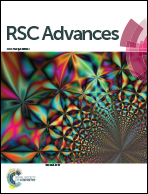Nano hydroxyapatite particles promote osteogenesis in a three-dimensional bio-printing construct consisting of alginate/gelatin/hASCs
Abstract
To design a hydrogel material containing nano hydroxyapatite particles for three-dimensional (3D) bio-printing of human adipose-derived stem cells (hASCs) and to explore whether nano hydroxyapatite particles can promote osteogenic differentiation of a 3D bio-printing construct consisting of hASCs in vivo and in vitro. A 3D reticular printing structure was designed. Sodium alginate/gelatin/hASCs (AG group) was considered as the control group, and sodium alginate/gelatin/nano hydroxyapatite/hASCs (AGH group) was considered as the experimental group. Immunofluorescence microscopy was used to observe the cell viability and cell adhesion, and cell proliferation was analyzed by comparison of viable cell numbers in printed constructs at 1 day and 7 days after printing. After 14 days of osteogenic induction for the AG group and AGH group, real-time quantitative PCR and immunofluorescence were used to analyse the expression of the osteogenesis-related genes Runt-related transcription factor 2 (RUNX2), osterix (OSX), and osteocalcin (OCN). New bone formation in printed constructs was observed using micro-CT, HE staining, Masson trichrome staining, and OCN immunohistochemical staining 8 weeks after being implanted. The cells in the AG group and AGH group were evenly distributed in the 3D printed constructs. The number of viable cells and cell viability both in the AG group and AGH group at 7 days after printing were higher than those at 1 day after printing (p < 0.05); however, the difference between the AG group and AGH group was not significant. At 14 days after osteogenic induction in vitro, real-time PCR results showed that the expression of osteogenesis-related genes in the AGH OM group was significantly higher than that in the AGH PM group, AG PM group, and AG OM group (p < 0.05). At 8 weeks after bio-printed construct implantation, the results of micro-CT, HE staining, Masson trichrome staining, and OCN immunohistochemical staining showed that the new bone formation in the AGH group was higher than that in the AG group (p < 0.05). The in vivo and in vitro results demonstrated that nano hydroxyapatite particles dispersed in a sodium alginate/gelatin matrix could promote osteogenic differentiation of hASCs in a 3D bio-printed construct, and this scaffold material could be considered to repair large bone tissue defects.


 Please wait while we load your content...
Please wait while we load your content...